Treatment Process
The patient in her mid 50’s. She presents desiring reconstructive treatment to address her failing dentition.

Oral examination reveals a failing dentition due to dental decay. Review of her systemic health demonstrates the presence of both Sjorgren’s syndrome, and Adult Onset Scoliosis. Sjogren’s syndrome is a chronic autoimmune disease in which a person’s white blood cells attack their moisture-producing glands, including those that produce saliva, thus the patient has a very dry mouth. Saliva is very important in terms of protecting against both dental decay and tissue infection. This patient has not only fallen victim to dental decay as the photo demonstrates, but she also is continuously battling with fungal infections affecting her oral soft tissues. Additionally, this patient is also in chronic back pain from her Scoliosis, and takes high doses of painkillers, which affects her ability to maintain adequate oral hygiene practices.
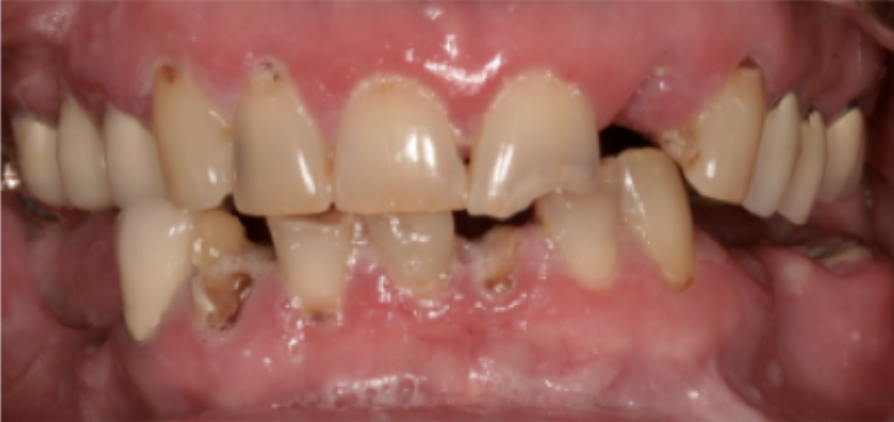
View of the upper jaw. All back teeth have been previously restored with crowns/bridges and several root canals. Dental decay has affected most of these teeth as well as the front teeth, as the photo demonstrates.
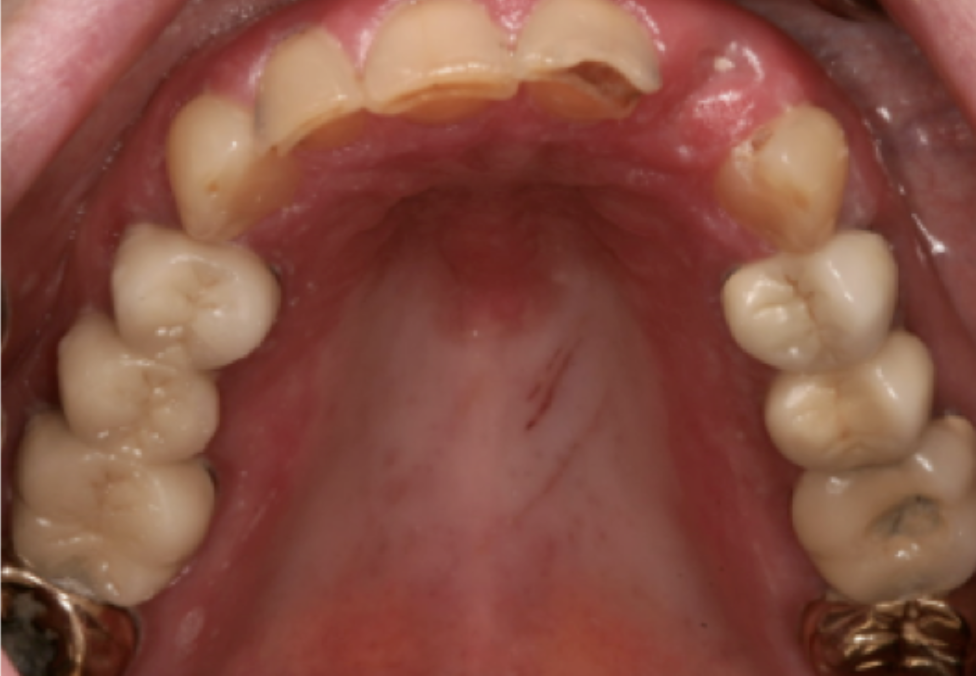
View of the lower jaw demonstrates decay on all teeth, rendering them un-savable without heroic measures. Several teeth are present only as root tips, as they have decayed well below the gemlike.
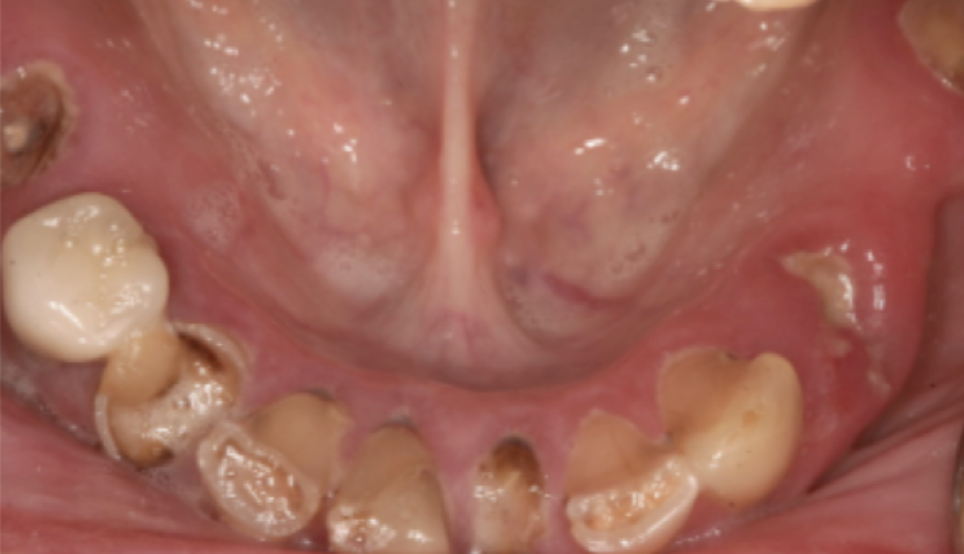
A panoramic X-ray reiterated many of the findings already described. Because most of the teeth are hopeless, and others that could be saved are either not strategic to a long term restorative plan, or would have a guarded prognosis even with heroic measures, due to the patient’s dry mouth and poor hygiene. Therefore, the decision was prudently made to extract all of her teeth. In treatment planning the patient for restorative options, conventional removable prosthetics (dentures) were highly discouraged, as they would be much less serviceable, and in addition cause further tissue irrigation given her dry mouth. The ideal treatment would be placement of dental implants that could support porcelain/metal bridges; this is the treatment that this patient elected for. An alternative plan that would have also been acceptable is upper and lower removable prostheses. More implants that usual would still be needed so that the prostheses could be designed for minimal tissue contact (because of her Sjorgren’s syndrome). A big advantage of dental implants for patients like this, is that implants will not decay like teeth do.
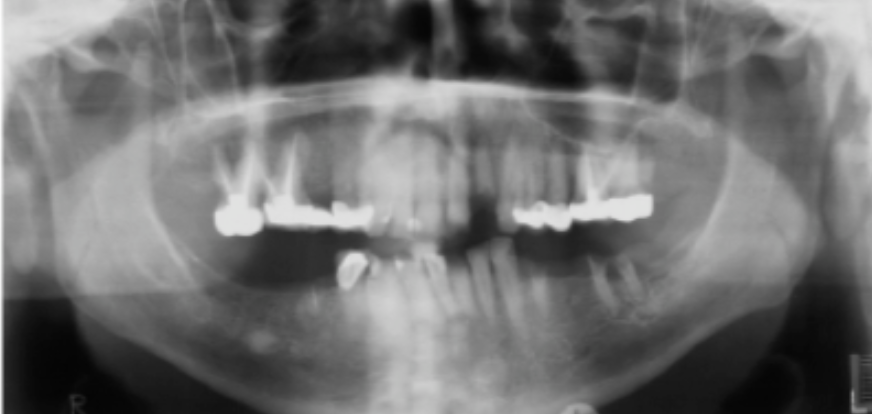
View of the upper jaw with implants in place. The patient did require bone grafting prior to implant placement. Because the process of extraction and implant placement was extensive, requiring staging between each step due to the need for bone grafting in the back of the upper jaw, the patient’s natural front teeth were maintained for an interim period to give her front teeth for esthetics and limited function.
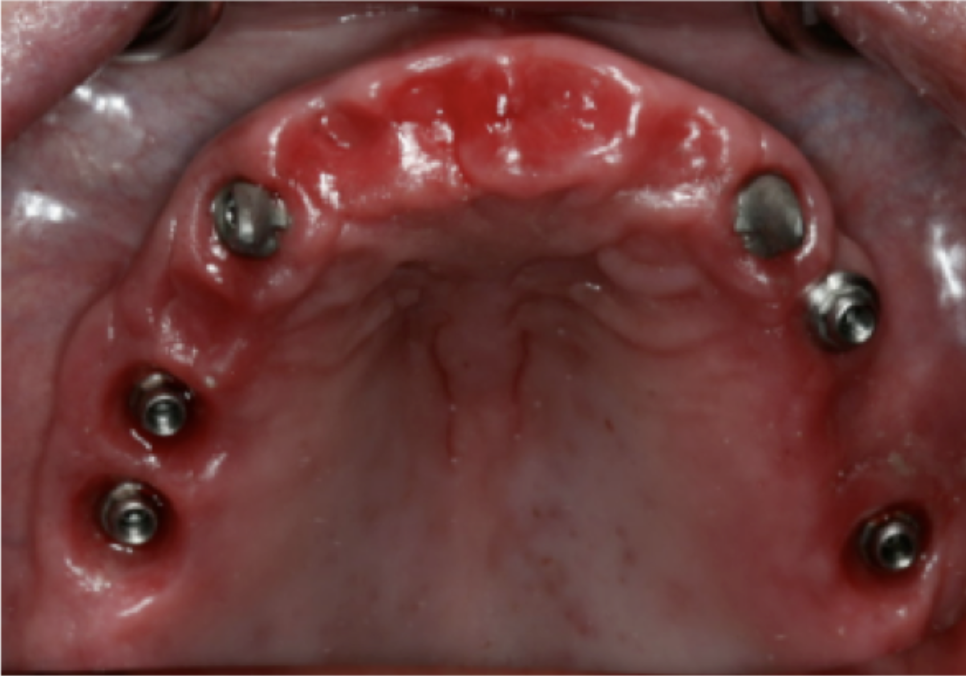
View on the lower jaw with implants in place. Although extensive grafting was not required prior to implant placement on the lower jaw, staged extraction and implant placement was done to allow the patient to have lower front teeth for esthetics/limited function, throughout the entire process.
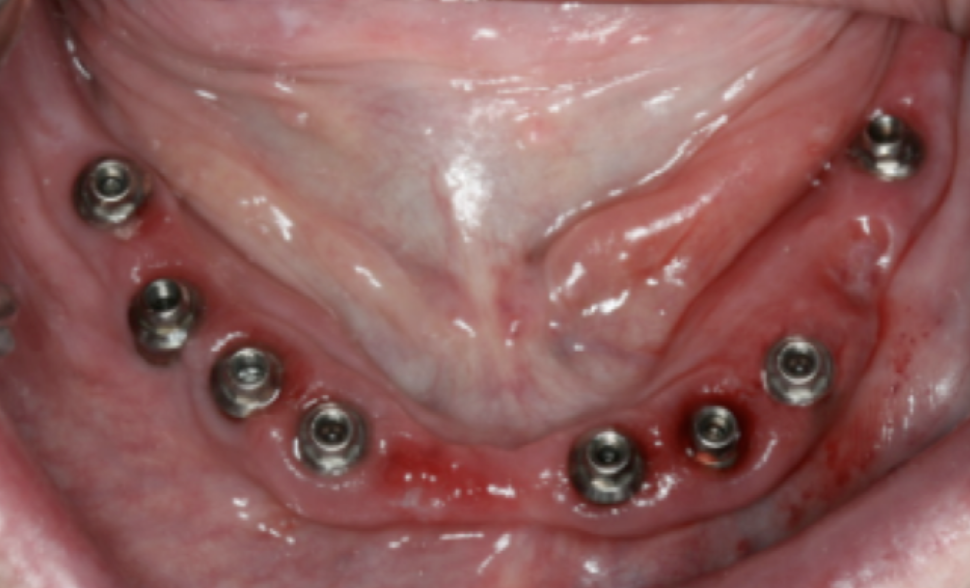
Temporary upper and lower bridges that connect to the healed dental implants were inserted at the same appointment her remaining few teeth were extracted. This allowed a very smooth transition that allowed the patient to have teeth throughout the entire process. Temporary bridges are very important in designing the final bridges. These temporaries allow esthetics and bite to be evaluated by both patient and dentist so that the final bridges can be precisely and predictably designed and fabricated.
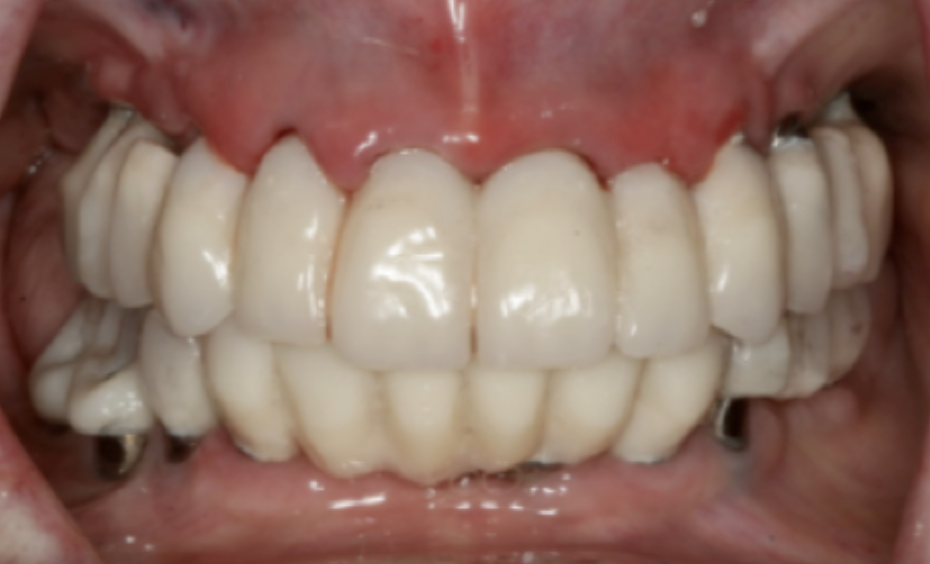
Smile photograph with implant temporaries in place.
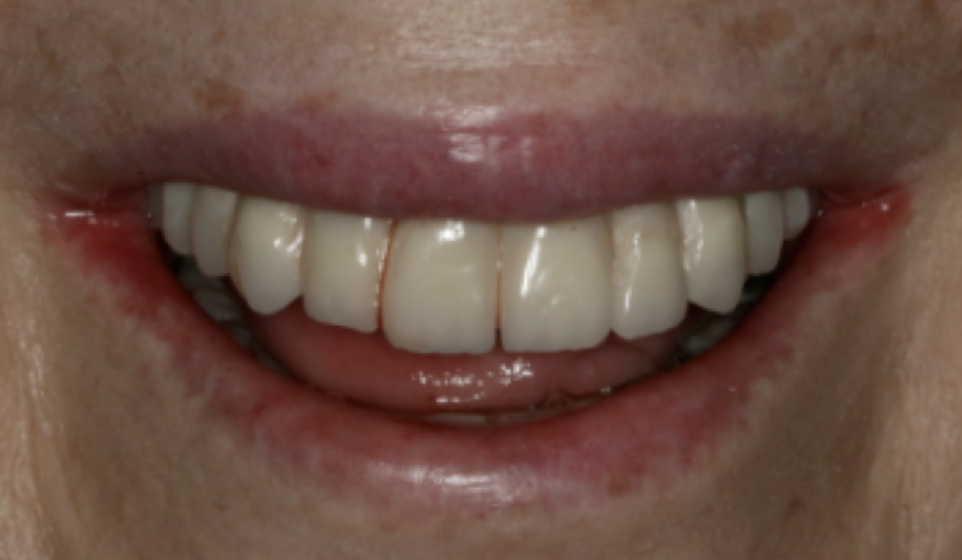
Full face photo with implant temporaries in place.

View of upper jaw with all final implant bridges in place. The chewing surfaces were made in metal to allow the highest possible strength without an esthetic compromise. Because implants are rigidly integrated to the patient’s bone, they do not have the slight shock absorbing capabilities that natural teeth have, which puts more stress on the restorations. In this situation, it is always most ideal to use metal on as many of the chewing surfaces as the patient will allow, for the best long term stability. All of the back bridges were also fixed to the implants with screws (rather than cement) to allow easy removal in the future if required for maintenance/repair. The screw access holes are covered with tooth colored filling material.
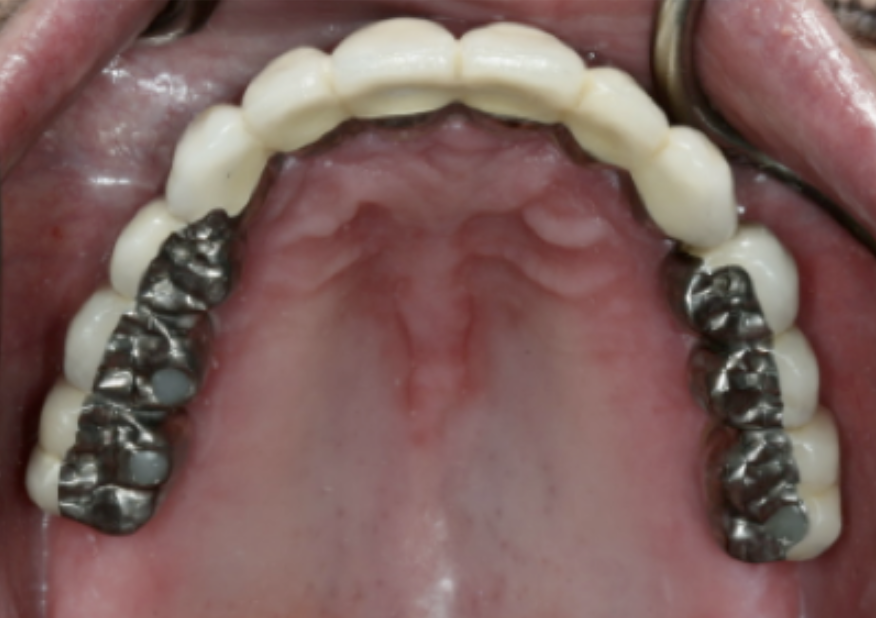
View of the lower jaw with all of the implant bridges in place. The lower bridges were also fixated to the implants with screws. The screw access holes are covered with tooth colored filling material.
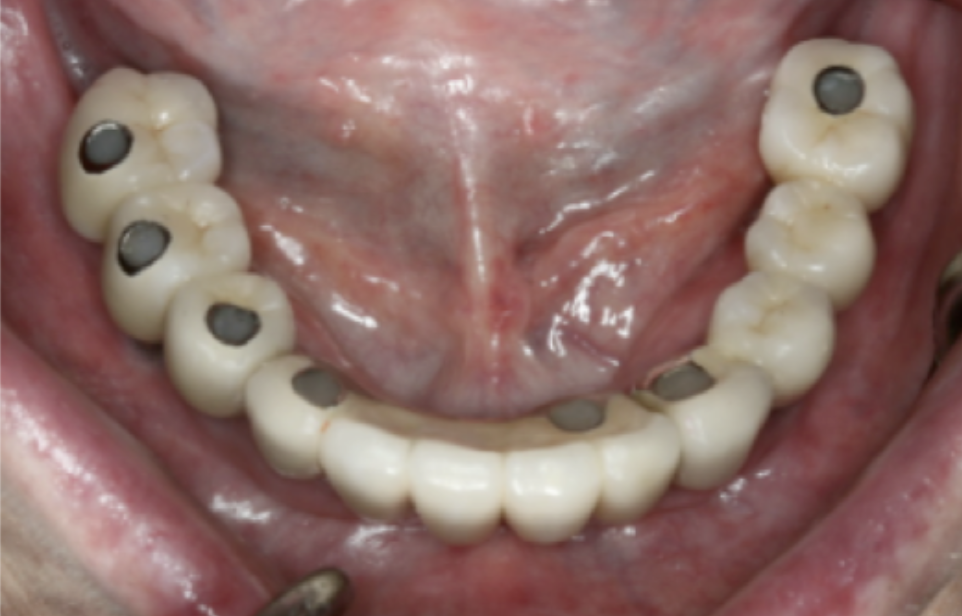
Final implant bridges in place.
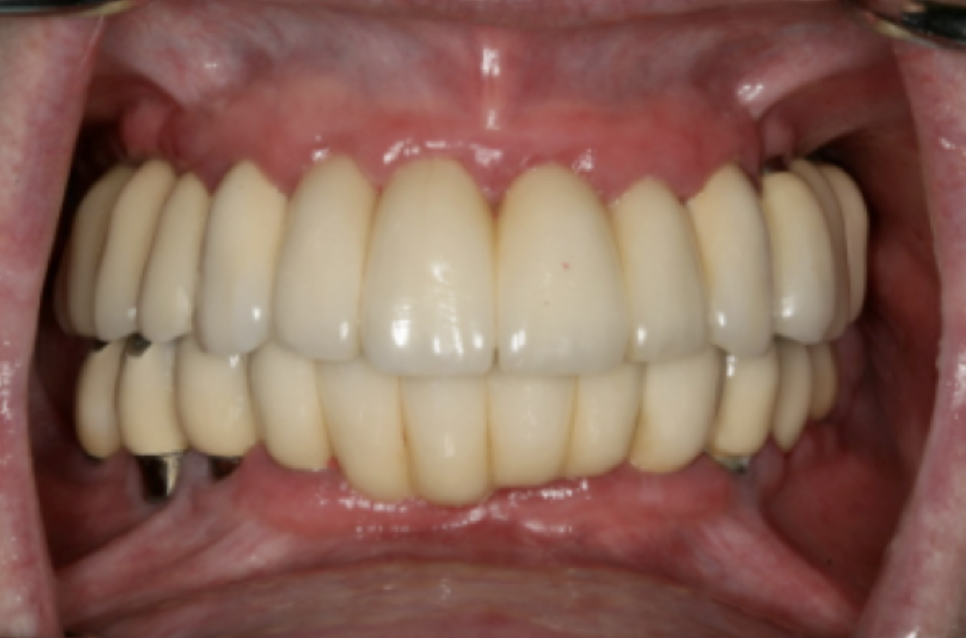
Frontal smile photo with final implant bridges in place.
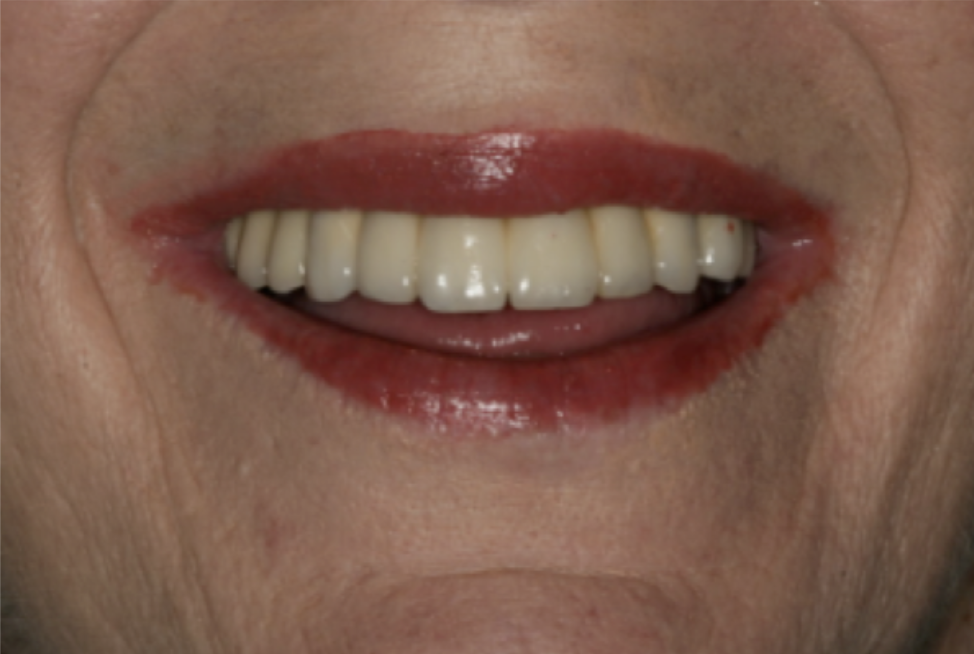
Profile smile photo with final implant bridges in place.

Before and after photos of teeth.

Before and after, panoramic x-ray comparison. The post treatment (after) x-ray demonstrates the final prostheses connected to the dental implants.

Because the patient demonstrated a slight grinding history, she was provided with a hard night guard to be worn nightly during sleep, to protect her crowns from damage if she continued to grind - we always assume that a patient who has ground their teeth in the past, will continue to do so in the future. This is imperative for this, especially because her implants will not provide any shock absorbing potential, which places the restoration under even higher force potential if not protected. Implants offer much less proprioception (feeling) than natural teeth, and patients are capable of even higher biting forces without realizing it, because their protective reflexes are not as sensitive with dental implants.

Smiling face photo with final implant bridges in place. The patient was very happy with the final outcome!

Ready to Start Your journey?
At Meng Dentistry we welcome all dental patients including those needing more complex dentistry. We provide the full range of Prosthodontics, cosmetic dentistry, and general dentistry including, teeth whitening, esthetic bonding, dental veneers, crowns, bridges, removable prostheses (dentures and partials), maxillofacial prosthodontics (obturators), and dental implants. Call today to see how Meng Dentistry can transform your smile!

